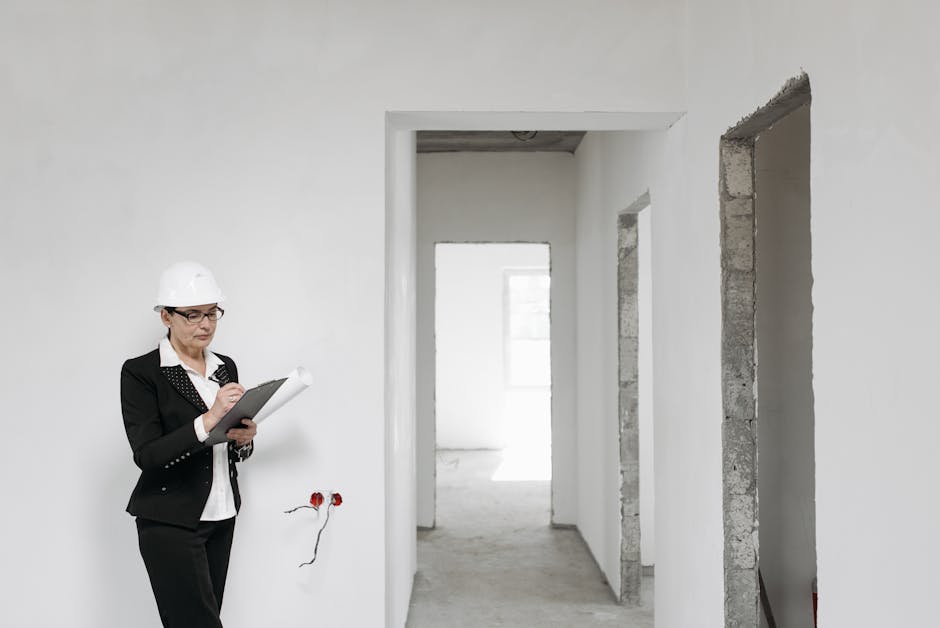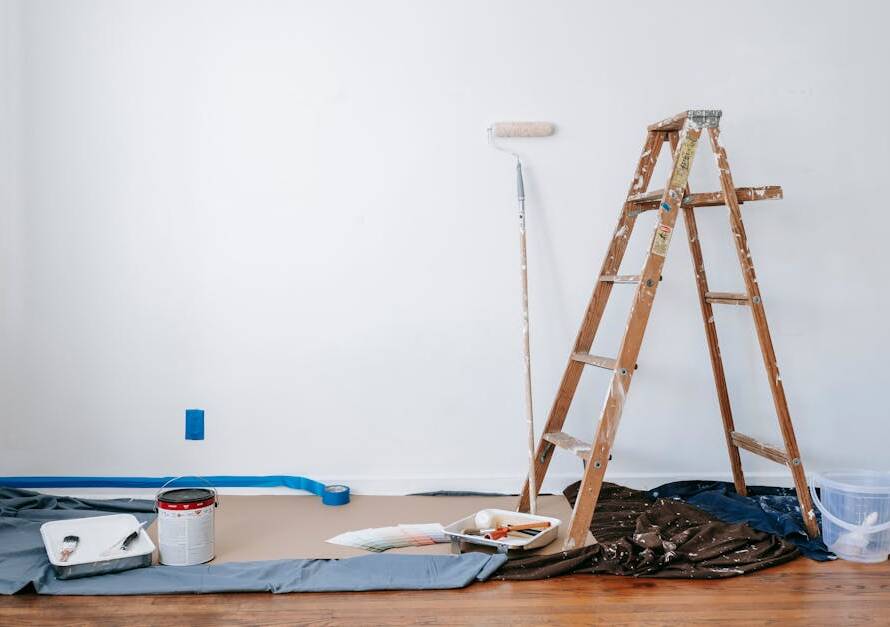Dealing with a flood can be overwhelming, especially in Coeur d’Alene where varying weather conditions can lead to unexpected disasters. Understanding the challenges involved in flood cleanup is crucial for effective management. Floods can cause extensive water damage, mold growth, and structural issues, making the cleanup process not only difficult but also dangerous. The immediate aftermath involves a chaotic scene where water needs to be removed quickly to prevent further damage.
One of the main challenges is ensuring that all the water is thoroughly extracted. Stagnant water can seep into floors, walls, and even the foundation, leading to long-term structural problems. Additionally, the risk of mold development is high if moisture is not effectively eliminated within the first 24 to 48 hours. Mold can not only damage the property but also pose severe health risks to inhabitants.
Electrical hazards are another serious concern during flood cleanup. Water and electricity don’t mix, and flooded areas may have exposed wires or compromised electrical systems. It’s essential to exercise caution and have professionals assess and handle the electrical components.
At Brothers Restoration, we treat all of our customers like family, ensuring that every step of the process is handled with care and expertise. If you find yourself in need of professional assistance, visit our website or call 208-Flooded to learn how we can help you navigate these challenges safely and efficiently.
Preparing for Effective Flood Cleanup
Preparation is key when it comes to an effective flood cleanup process in Coeur d’Alene. Taking the right steps beforehand can significantly reduce the damage and make the entire operation smoother and more efficient. The first step is to ensure that you have the necessary tools and supplies at hand. This includes items such as pumps, wet/dry vacuums, dehumidifiers, and air movers, which are essential for water extraction and drying out the affected areas.
Before starting the cleanup, it’s important to assess the safety of your property. Ensure that the power is turned off, as water and electricity can be a deadly combination. If you suspect any electrical damage, contact a professional electrician before proceeding. Furthermore, wearing protective gear like gloves, boots, and masks is crucial to protect yourself from contaminated water and hazardous materials that may be present.
Documenting the extent of the damage through photographs and videos can be invaluable for insurance claims. This visual evidence will help you communicate effectively with your insurance provider and ensure that you receive adequate compensation for repairs and replacements. Additionally, having a record of the damages can aid in the planning and prioritization of the cleanup tasks.
Finally, having a clear plan of action will help you manage the cleanup process efficiently. Prioritize areas that need immediate attention to prevent further damage, and coordinate with professionals if necessary. Organizing a systematic approach ensures that no aspect of the cleanup is overlooked, making the recovery process more manageable.
Assessing Flood Damage Thoroughly
Once the initial preparations are in place, the next crucial step in the flood cleanup process is a thorough assessment of the damage. This evaluation helps in understanding the scope of work required and in formulating an effective strategy for restoration. In Coeur d’Alene, where flooding can vary in intensity, a detailed assessment is essential to ensure nothing is overlooked.
Begin by examining the structural integrity of your home. Look for visible signs of damage such as cracks in the foundation, warping of walls, or sagging ceilings, which might indicate underlying issues. It is advisable to contact a structural engineer if you suspect significant structural damage, as they can provide expert guidance on repairs.
Next, pay attention to the *electrical and plumbing systems*. Floodwaters can severely affect these systems, leading to potential hazards. Check for any exposed wires, malfunctioning outlets, or leaks in plumbing fixtures. If you notice anything unusual, refrain from using the affected systems and consult a professional for a comprehensive inspection.
Don’t forget to assess the *furnishings and personal belongings*. Floodwaters often carry contaminants that can damage furniture, carpets, and other household items. Check each item for water damage, mold, or odor. Items that are severely affected may need to be discarded, while others might be salvaged with proper cleaning and restoration techniques.
Lastly, take stock of the *outdoor areas*. Assess gardens, patios, and any outdoor structures for flood-related damage. This comprehensive evaluation will help in prioritizing repairs and planning the overall cleanup process efficiently. By systematically assessing all aspects of your property, you ensure a complete and effective restoration journey.
Step-by-Step Flood Cleanup Process
After thoroughly assessing the flood damage, it’s time to embark on the flood cleanup process. A structured approach ensures that all areas are addressed effectively, minimizing potential long-term damage. In Coeur d’Alene, where swift action is vital to prevent mold and further deterioration, following these steps can help streamline the cleanup effort.
1. Safety First: Before beginning any cleanup, ensure that the power supply is turned off to avoid electrical hazards. Wear protective gear such as gloves, boots, and masks to protect against contaminants in the floodwater.
2. Water Removal: The initial step involves removing standing water using pumps or wet vacuums. Prioritize areas with the deepest water first to prevent seepage into walls and floors.
3. Drying Out: Once the water is removed, use dehumidifiers and fans to thoroughly dry out the affected areas. This step is critical to prevent mold growth, which can start within 24 to 48 hours after flooding.
4. Cleaning and Disinfecting: Clean all surfaces with a mixture of water and detergent, followed by a disinfectant. Pay special attention to items that may have come into contact with floodwater, as they may harbor harmful bacteria.
5. Inspect and Salvage: Examine all furniture, appliances, and personal items. Discard those that cannot be salvaged or pose health risks. For items that can be saved, consider professional cleaning services to ensure thorough sanitization.
6. Repair and Restore: Once the cleaning is completed, start with necessary repairs. This may include replacing drywall, flooring, or insulation that has been compromised. Ensure all repairs are done by professionals to guarantee safety and longevity.
By following this meticulous step-by-step process, you can effectively manage flood cleanup in Coeur d’Alene, ensuring your home is restored to a safe and habitable condition swiftly and efficiently.
Ensuring Safety During Flood Cleanup
Maintaining safety during the flood cleanup process is paramount to protect yourself and your family from potential hazards. Floodwaters can contain various contaminants, including sewage, chemicals, and other dangerous substances, which can pose serious health risks. In Coeur d’Alene, being prepared and vigilant can significantly reduce these risks.
1. Use Protective Gear: Always wear appropriate personal protective equipment (PPE) such as rubber gloves, waterproof boots, and face masks. These items will shield you from direct contact with contaminated water and airborne particles.
2. Ensure Electrical Safety: Confirm that the electricity is turned off in flooded areas to prevent the risk of electrocution. If you must work with electrical equipment, make sure it’s thoroughly dry and safe to use.
3. Ventilation: Keep the area well-ventilated. Open windows and doors if possible, and use fans to circulate air. This helps to disperse any potentially harmful vapors released during the cleaning process and assists in drying out the space.
4. Monitor Air Quality: Be aware of any unusual odors which can indicate mold or other hazardous materials. Utilize air purifiers with HEPA filters to improve air quality and reduce allergens and pollutants.
5. Safe Handling of Chemicals: When using cleaning agents and disinfectants, follow the manufacturer’s instructions carefully. Mixing chemicals can create toxic fumes, so it is crucial to use them in a well-ventilated area and store them safely away from children and pets.
By adhering to these safety measures, you can effectively manage the flood cleanup in Coeur d’Alene, ensuring your well-being and that of your loved ones. Remember, the key to a successful cleanup is not only efficiency but also safety at every turn.
Restoration and Prevention Tips
After the initial flood cleanup, the journey towards restoring your home and preventing future damage begins. In Coeur d’Alene, the focus shifts to not only rebuilding but also implementing strategies to safeguard against future flooding incidents.
1. Prioritize Structural Repairs: Start by assessing the structural integrity of your home. Check for damage to walls, floors, and foundations. It is critical to address these repairs promptly to prevent further deterioration and ensure the safety of your home.
2. Mold Remediation: Mold can develop quickly in the aftermath of a flood. Engage professional mold remediation services if necessary to thoroughly remove any traces of mold and prevent health issues. Maintaining a humidity level below 60% in your home can help inhibit mold growth.
3. Upgrade to Flood-Resistant Materials: Consider using flood-resistant materials for repairs and renovations. Materials such as tile, concrete, and marine-grade plywood can endure water exposure better than traditional materials.
4. Install a Sump Pump: A sump pump is a valuable investment for homes in flood-prone areas. It helps to remove water that accumulates in the basement or crawl spaces during heavy rains, thereby reducing the risk of flooding.
5. Implement Landscaping Solutions: Proper landscaping can divert water away from your home. Techniques such as grading your yard, installing French drains, and planting water-absorbent plants can effectively manage excess water.
Taking these proactive steps not only aids in the restoration of your home but also equips you to better handle future flooding events. For personalized advice and expert assistance, call 208 Flooded or visit our website at www.brothersresto.com. At Brothers Restoration, we are committed to treating you like family and ensuring your home is safe and secure for years to come.






